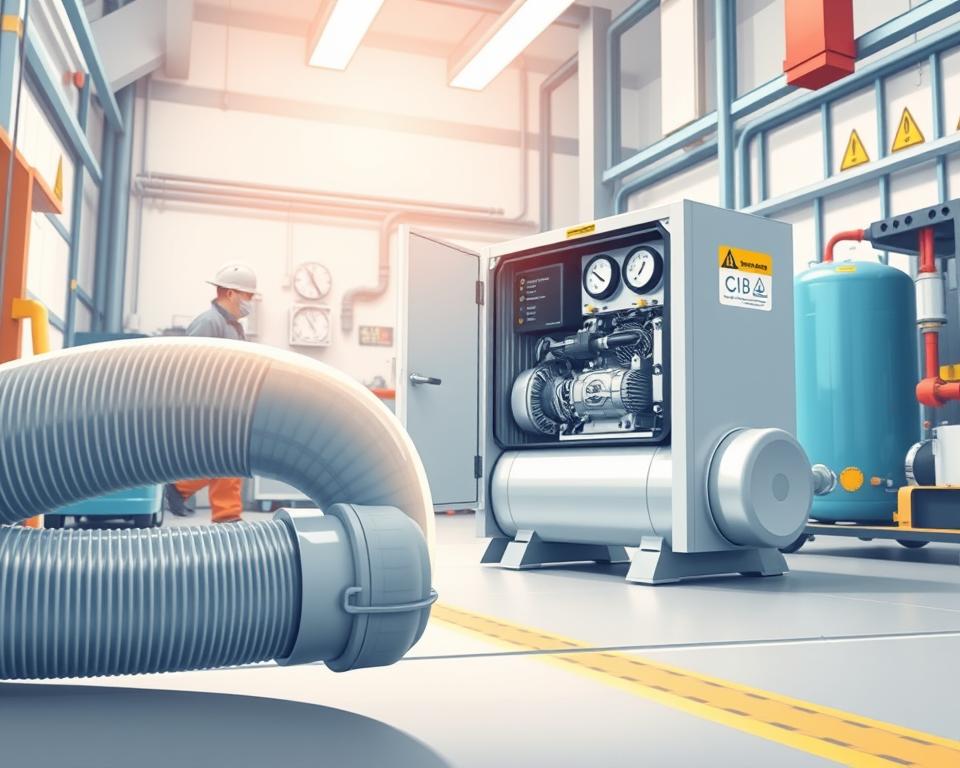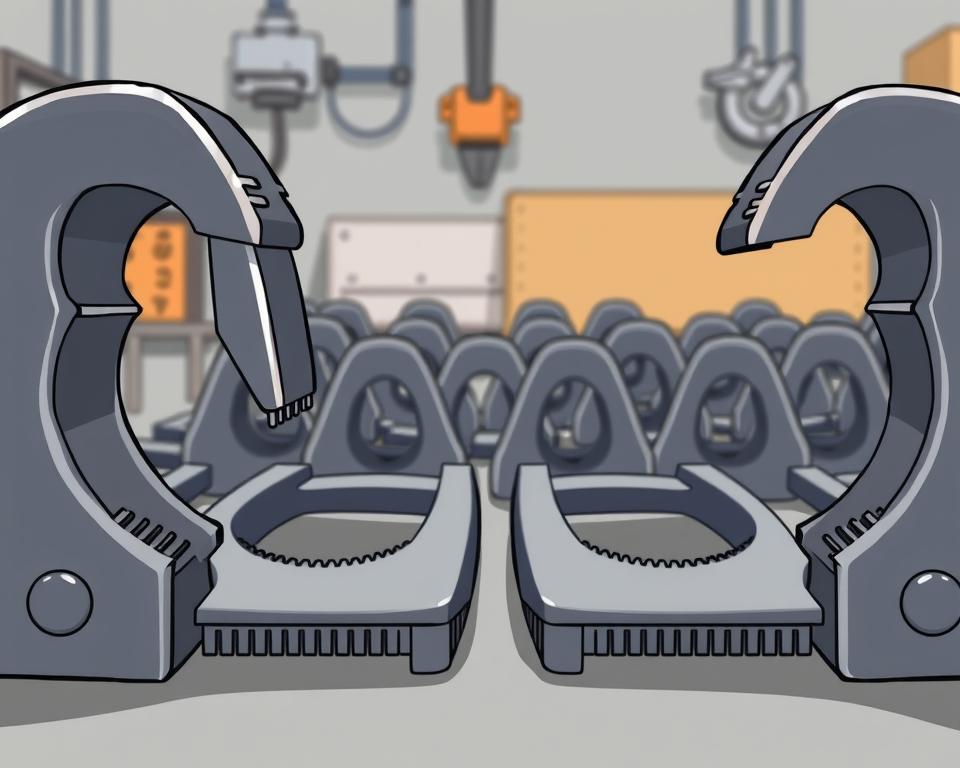Your Complete Guide to PVC Pipe in Compressed Air Systems
You might be surprised to learn that a failure in a compressed air system can unleash power on par with dynamite. Many facilities still use piping systems made from risky materials, unaware of the dangers. This guide explains why safety should come first when using PVC air lines.
Despite growing interest in certain materials, OSHA strictly prohibits their use in above-ground applications. Repeated contact with compressor oil and thermal cycling makes them brittle, causing explosive failures. Even at “safe” pressure ratings, the risk of explosions remains high.
Turn to Installation Parts Supply for sturdy aluminum systems. Spending on the right materials prevents OSHA penalties and protects employees. Discover steps to construct a secure system.

Central Ideas
- Explosion danger leads OSHA to outlaw some pipe materials.
- Temperature changes can halve pressure ratings.
- Long-term exposure makes pipes prone to brittle breaks.
- Aluminum piping offers a safer alternative.
- Spending on correct materials avoids penalties and injuries.
The Risks of PVC in Air Compressor Lines
PVC makers caution never to employ it in high-pressure air setups. Unlike water, compressed air stores explosive energy—a ruptured line can release force comparable to dynamite. Material selection is the linchpin of air-system safety.
- Brittleness: Sub-freezing temperatures turn materials brittle, increasing fracture risks.
- Adhesive failures: Joints weaken when exposed to compressor oils or temperature swings.
- Misleading ratings: Most shops run above 110°F, slashing rated pressure in two.
After a PVC burst hurt staff, OSHA levied a $110,000 fine. The “heat of compression” further reduces safe operating limits, a factor often overlooked in ratings.
“Above-ground use of certain plastics for compressed air violates OSHA standards due to explosion risks.”
Metal alternatives fail more predictably, bending rather than fragmenting. PVC shards fly far and fast, causing collateral damage.
Workshops face daily temperature fluctuations that accelerate material degradation. A decade’s UV and chemical attack weakens plastic, so small leaks too often balloon into disasters.
Recommended Piping Materials for Compressed Air
Aluminum air lines deliver superior safety and leak reduction. They leak 90% less than black iron, making them ideal for today’s shops. Aluminum’s lightness and anti-rust traits prolong system life.
Snap-together modular aluminum cuts installation hours. Installation Parts Supply offers pre-assembled sections that snap together. A Midwest auto plant cut labor costs by 40% after switching to this system.
- Copper: Best for cleanrooms due to natural antimicrobial properties. Requires soldering expertise.
- Stainless Steel: Stainless steel stands up to salty, moist conditions.
- ABS/HDPE: Chemical-resistant for labs and factories handling solvents.
“Our aluminum retrofit reduced energy waste by 15%—paying for itself in 18 months.”
Proper torque is critical. Cracks from overtightening and leaks from under-tightening are common. Stick to recommended 25–30 ft-lb torque for aluminum.
NSF-approved lines keep food-grade air clean. Pick piping suited to your facility’s conditions.
Selecting the Best Air Compressor Piping
Consider cost, compliance, and efficiency in your pipe decision. Switching to aluminum saved a factory $12k each year. Use this guide to select the optimal material.
| Material | Cost (per ft) | Maintenance | ROI Time |
|---|---|---|---|
| Aluminum | $8.50 | Low | 18 months |
| Black Pipe | $5.00 | High | N/A |
| Copper | $10.20 | Medium | 24 months |
Don’t ignore thermal limits. Plastics fail under 32°F; aluminum works from -40°F to 200°F. Stainless steel stands up to harsh chemicals.
Pro Tip: Calculate ROI using CFM loss formulas. A 10% air leak in 50 HP equals about $3,500 annually.
- Don’t undersize—pick pipe rated at or above your compressor’s PSI.
- Check OSHA compliance for weld inspections and pressure tests.
- Request a free system audit from Installation Parts Supply.
“Our aluminum retrofit cut energy waste by 15%—paying for itself in 18 months.”
Hire pros for big installs to guarantee airtight connections. Always verify warranty terms—some materials cover 10+ years.
Bringing It All Together
Choosing the right materials for your compressed air setup isn’t just about cost—it’s about safety. Ninety-two percent of pipe failures occur in aging lines, frequently causing injuries. With 99.8% uptime, aluminum is the clear long-term choice.
Key takeaways:
- Say no to plastics that can explode.
- Choose rust-proof metals over plastics.
- Ignoring standards invites fines and insurance headaches.
Time to make the switch? Grab same-day pricing and deals on kits from Installation Parts Supply. Download our free maintenance template or call for emergency replacements.
Commit to safer piping today—your team’s safety depends on it.


